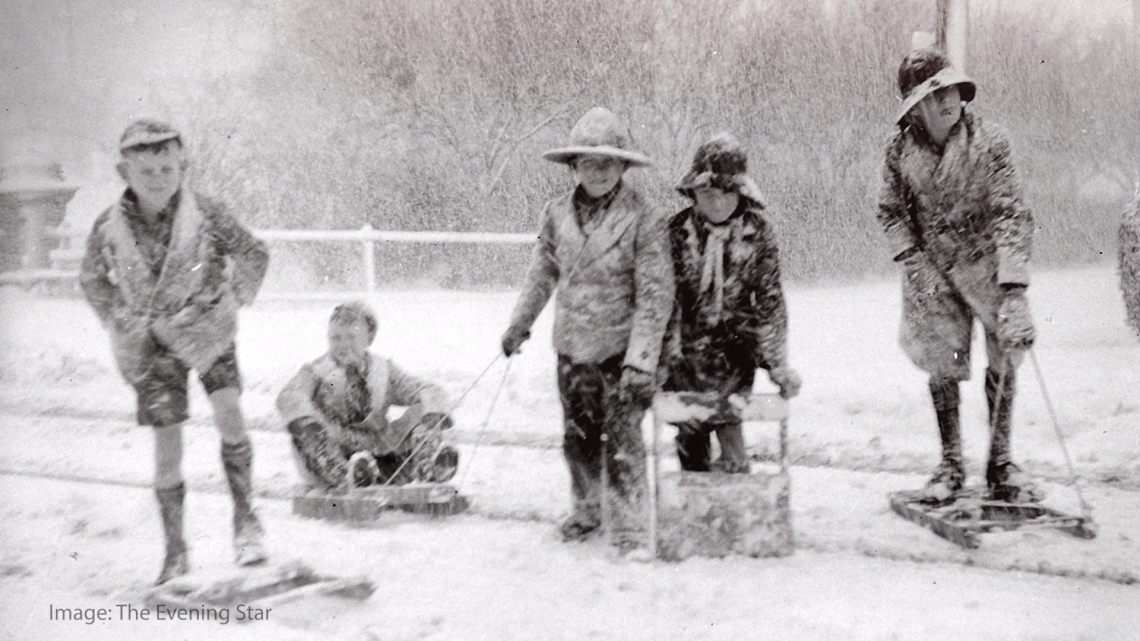New Zealand, 21 November 2019 – NIWA and Microsoft Corp. are teaming up to make artificial intelligence handwriting recognition more accurate and efficient in a project that will support climate research.
The project aims to develop better training sets for handwriting recognition technology that will “read” old weather logs. The first step is to use weather information recorded during a week in July 1939 when it snowed all over New Zealand, including at Cape Reinga.
NIWA climate scientist Dr Andrew Lorrey says the project has the potential to revolutionise how historic data can be used. Microsoft has awarded NIWA an AI for Earth grant for the artificial intelligence project, which will support advances in automating handwriting recognition. AI for Earth is a global programme that supports innovators using AI to support environmental initiatives related to water, climate change, sustainable agriculture and biodiversity.
Microsoft’s Chief Environmental Officer, Lucas Joppa, sees a project that could quite literally be world-changing. “This project will bring inanimate weather data to life in a way everyone can understand, something that’s more vital than ever in an age of such climate uncertainty.
“I believe technology has a huge role to play in shining a light on these types of issues, and grantees such as NIWA are providing the solutions that we get really excited about.”
Dr Lorrey has been studying the weather in the last week of July 1939 when snow lay 5 cm deep on top of Auckland’s Mt Eden, the hills of Northland turned white and snow flurries were seen at Cape Reinga. “Was 1939 the last gasp of conditions that were more common during the Little Ice Age, which ended in the 1800s? Or the first glimpse of the extremes of climate change thanks to the Industrial Revolution?”
Weather records at that time were meticulously kept in logbooks with entries made several times a day, recording information such as temperature, barometric pressure and wind direction. Comments often included cloud cover, snow drifts or rainfall.
“These logs are like time machines, and we’re now using their legacy to help ours,” Dr Lorrey says.
“We’ve had snow in Northland in the recent past, but having more detail from further back in history helps us characterise these extreme weather events better within the long-term trends. Are they a one-in-80-year event, do they just occur at random, can we expect to see these happening with more frequency, and why, in a warming climate, did we get snow in Northland?”
Until now, however, computers haven’t caught up with humans when it comes to deciphering handwriting. More than a million photographed weather observations from old logbooks are currently being painstakingly entered by an army of volunteer “citizen scientists” and loaded by hand into the Southern Weather Discovery website. This is part of the global Atmospheric Circulation Reconstructions over the Earth (ACRE) initiative, which aims to produce better daily global weather animations and place historic weather events into a longer-term context.
“Automated handwriting recognition is not a solved problem,” says Dr Lorrey. “The algorithms used to determine what a symbol is — is that a 7 or a 1? — need to be accurate, and of course for that there needs to be sufficient training data of a high standard.” The data captured through the AI for Earth grant will make the process of making deeper and more diverse training sets for AI handwriting recognition faster and easier.
“Old data is the new data,” says Patrick Quesnel, Senior Cloud and AI Business Group Lead at Microsoft New Zealand. “That’s what excites me about this. We’re finding better ways to preserve and digitise old data reaching back centuries, which in turn can help us with the future. This data is basically forgotten unless you can find a way to scan, store, sort and search it, which is exactly what Azure cloud technology enables us to do.”
Dr Lorrey says the timing of the project is especially significant.
“This year is the 80th anniversary of The Week It Snowed Everywhere, so it’s especially fitting we’re doing this now. We’re hoping to have all the New Zealand climate data scanned by the end of the year, and quality control completed with usable data by the end of the next quarter.”

